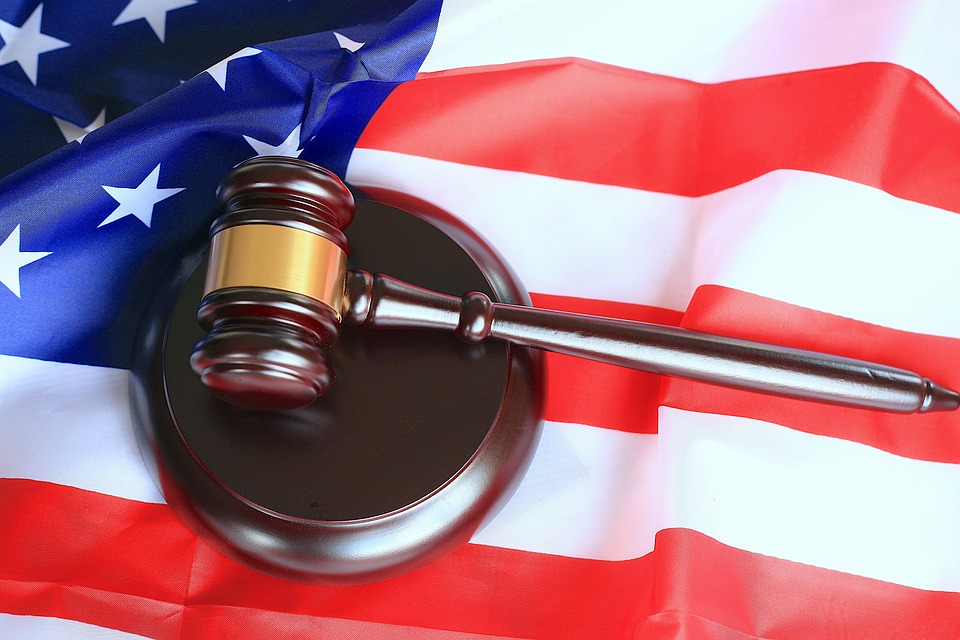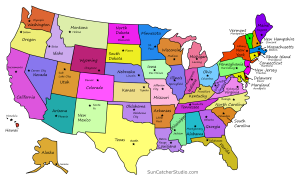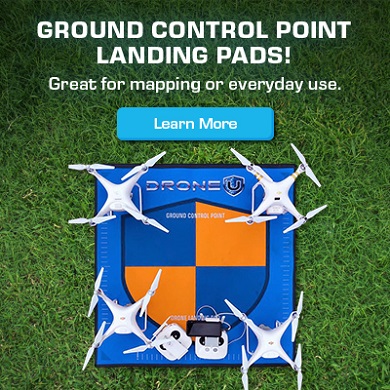
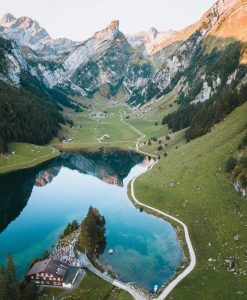




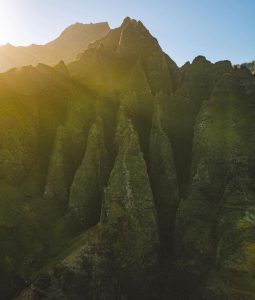


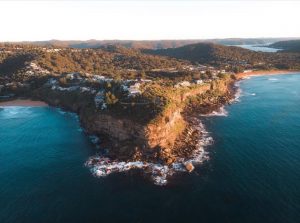
Download our free Part 107 drone certification study guide.
![New Drone Laws in the USA [2024]](https://www.thedroneu.com/wp-content/uploads/2023/03/New-Drone-Laws-in-the-USA-1024x576.png)
On this page, we have provided a comprehensive summary of the latest USA drone laws.
With the rising adoption of UAVs, the FAA and state authorities have been continuously working towards making these drone laws practical while preventing drone misuse and protecting citizens.
We keep a close eye on the updates and try to keep this information as recent as possible.
Disclaimer: The content on this page is provided for informational purposes only and is not intended as a substitute for legal advice. We encourage you to consult with an attorney before performing any operation involving UAS/drones.
Now let’s take a quick look at the new FAA drone laws.
Table of Contents
ToggleFAA New Rules and Drone Laws in the U.S.
It is legal to fly drones in the United States subject to the rules outlined by Federal Aviation Administration (FAA).
The Federal Aviation Administration (FAA) manages most of the airspace in the United States. And they’ve outlined detailed regulations that every drone pilot in the United States must be aware of.
General Drone Flying Rules For All Drone Pilots
These are some of the most common rules when flying drones in the U.S. but there may be additional regulations in certain states.
The following regulations are applicable for both commercial and non-commercial (recreational) drone pilots.
1. You must fly your drone at or below 400 feet.
2. All drones must be registered and should not weigh more than 55 pounds (25 kg).
3. Use B4UFLY Mobile App – the safety app from the FAA, which uses your GPS location to provide real-time information about airspace restrictions and other flying requirements.
4. You must be aware of No Drone Zones.
5. You must fly within the visual line of sight so that you or the observer can see the drone at all times.
6. You must learn about airspace restrictions, especially around airports, so your drone does not endanger people or other aircraft.
7. Drones can be flown without Remote ID equipment within FAA-Recognized Identification Areas (FRIAs).
8. Give way to and do not interfere with other aircraft.
Note: Anyone flying a drone in the U.S. National Airspace System (NAS) is responsible for flying within the FAA guidelines and regulations.
Drone Regulations for Recreational Pilots
Here are the rules for flying drones for recreational purposes:
1. If you want to fly drones for fun in the USA, you need to take the TRUST exam (The Recreational UAS Safety Test) and carry proof of test passage when flying.
2. You must follow the safety guidelines of an FAA-recognized CBO (Community Based Organization) like AMA – The Academy of Model Aeronautics.
3. You must fly your drone at or below 400 feet in Class G (uncontrolled) airspace.
4. You need to have authorization using LAANC or DroneZone before flying at or below FAA-authorized altitudes in Class B, C, D, and E controlled airspace.
5. Keep a current FAA registration, mark your drones on the outside with the registration number, and carry proof of registration with you when flying.
6. Avoid operating your drone in a way that risks the safety of national airspace.
If you’re not sure which rules apply to your flight, fly under Part 107.
There are some exceptions for Limited Recreational UAV Operations. You can read Advisory Circular 91-57C for more information.
UAS Regulations For Commercial Drone Pilots
Following are the rules for flying drones for non-recreational purposes:
1. To fly drones commercially you must obtain a Remote Pilot Certificate – Part 107 license from the FAA.
2. You must pass the initial aeronautical knowledge exam: “Unmanned Aircraft General – Small (UAG)”.
3. To become an FAA-Certified drone pilot you must be at least 16 years old.
4. You must be able to understand, read, write, and speak English.
5. You must be mentally and physically able to operate a UAV safely.
6. Before signing up for the knowledge test, create an IACRA (Integrated Airman Certification and Rating Application) profile and obtain an FAA Tracking Number (FTN).
7. Commercial UAV pilots can fly drones at night, over people, and moving vehicles without a waiver under Part 107 as long as the rules are followed. You must have airspace authorization for night operations.
To learn more about how to get a Remote Pilot Certificate you can visit FAA’s website.
Want to take the FAA Pilot Certification Exam?
Download our free Part 107 drone certification study guide.
FAA Drone Rules for Foreigners
If you are a non-U.S. citizen and intend to bring your drone when you visit the United States, here are the rules you need to follow.
- If you are flying your drone for fun you must follow the rules for Recreational Flyers and Modeler Community-Based Organizations.
- Recreational drone flyers must visit the FAA’s DroneZone portal and complete the process provided to fly under “The Exception for Recreational Flyers” flying their aircraft in the United States. The FAA will consider the issued certificate as a recognition of ownership rather than a certificate of U.S. aircraft registration.
- If you want to fly your drone for commercial purposes you must comply with all applicable rules and operating requirements.
- Before conducting any commercial operations in the United States, the operator of a foreign civil aircraft must possess a foreign aircraft permit issued by DOT and comply with applicable FAA requirements. For more information visit foreign aircraft permits under Part 375 and the application process.
FAA Drone Registration Important Points
You can register your drones at FAA DroneZone either under Part 107 or the Exceptions for Recreational Flyers. To be sure what kind of a drone pilot you are, use FAA’s User Identification Tool or go to the Getting Started page to know more.
Points to Consider
- Drones weighing 0.55 pounds (250 grams) or less and are flown exclusively under the Exception for Recreational Flyers may fly without registration.
- Drones registered for commercial purposes under part 107 may be flown for recreational purposes as well.
- Drones registered for recreational purposes under the Exception for Recreational Flyers cannot be flown for Part 107 operations.
- If your drone requires an FAA registration number it will also be required to broadcast Remote ID information (unless flown within an FRIA).
How to Register My Drone With FAA
You need to provide basic information when registering your drone such as:
- Make and model of your drone
- Email address
- Physical address and mailing address (if both are different)
- Phone number
- Credit or debit card
- Specific Remote ID serial number provided by the manufacturer (if applicable)
Federal Aviation Administration (FAA) Drone Registration Fees
- Drone registration for Part 107 registration costs $5 per drone and is valid for three years.
- Drone registration for the Exception for Recreational Flyers registration costs $5 and is valid for three years.
- Once you have registered your drone, you can’t transfer between types (part 107 or the Exception for Recreational Flyers).
Federal Aviation Administration (FAA) Drone Registration Requirements
- To register a drone with the FAA you need to be at least 13 years old. If you’re under 13 years of age, someone who is 13 years of age or older must register the drone for you.
- A U.S. citizen or legal permanent resident of the United States.
- FAA will consider the issued certificate for foreign operators as a recognition of ownership rather than a certificate of U.S. aircraft registration.
Where to Register a Drone
- Register a drone by mail
- Register a drone online at FAADroneZone (drone must be less than 55 pounds)
Learn to Fly Before You Fly
Drone U offers all-access membership and gives you unlimited access to 41+ drone courses for $57.
Frequently Asked Questions
Are drones allowed in the USA?
Drones are permitted in the United States of America for both recreational and commercial purposes, subject to FAA and local regulations. The Federal Aviation Administration (FAA) approves commercial drone flights under Part 107 and flying recreational drones under the FAA TRUST test.
Which drone pilots must comply with the Remote ID Rule?
All drone operators required to register their UAS must operate their aircraft in accordance with the final rule on remote ID beginning September 16, 2023, which gives drone owners sufficient time to upgrade their aircraft.
What is the FAA TRUST test?
The Recreational UAS Safety Test (TRUST) is a recreational drone pilot certification program designed to help recreational pilots prove their skills and obtain a certificate proving they’ve passed a basic aeronautical knowledge and safe flying test.
Do I need permission from the FAA to fly a UAS or drone for recreation or as a hobby?
There are two ways for recreational or hobby UAS fliers to operate in the National Airspace System in accordance with the law and/or FAA regulations.
Do drone laws and rules for flying drones differ by state?
Yes, they do. Every state has different laws and regulations regarding UAS (drones). That’s why we suggest you go through the information provided above to get aware of the new drone rules and laws within a state.
Can you fly a drone at night?
Yes, you can fly drones at night under Part 107. However, airspace authorizations are required for night operations in controlled airspace under 400 feet. For more information visit the Part 107 Waiver page.
Can I fly in an NOAA Protected area?
Watch this video to get the answer:
YOU MAY ALSO LIKE...
Add Your Comment
Some of our most popular topics...
Be sure and check out our page with guides, posts and other helpful information.
Learn MoreTop 10 Blogs
- 1. Autel Evo 2 vs DJI Mavic 3 – Which Drone Should You Buy in 2020?
- 2. Part 107 License FAQ | Your Drone Certificate Questions Answered
- 3. Flying Large Drones Over 55 Pounds Using Section 333 Exemption
- 4. Drone Insurance FAQ's – How to Get the Best and Most Affordable Coverage
- 5. LAANC Apps - Using Kittyhawk and Skyward for Approval
- 6. FAADroneZone - How to Apply for a Part 107 Waiver
- 7. Little Known Facts About Part 107’s “Visual Line of Sight (VLOS)" Rule That You Might Not Be Aware Of
- 8. Should You Get Drone Jobs through Drone Base?
- 9. Flying Drones Over Streets and Moving Traffic
- 10. Best Drones for Flying in the Wind
Top 10 Podcasts
- 1. What should I know about drone insurance?
- 2. BONUS EPISODE: Michael Singer v. City of Newton (City Drone Ordinance Nullified!)
- 3. Is there a place for me in the real estate industry if I lack photography and video skills?
- 4. Is the DJI Spark a good drone?
- 5. INTERVIEW WITH ANDY LUTEN
- 6. How to market your drone business
- 7. DJI Drone Comparison | DJI Phantom 4 Pro, Inspire 1, Inspire 2
- 8. Can I fly my drone over people if I have their consent?
- 9. Drone Photography Pricing for land-only drone jobs
- 10. Can I fly my drone over a road?

Download our No #1 Resource: Part 107 Study Guide
What's Inside this Guide?
- 2500+ pages of FAA material broken into digestible easy to read 279 pages
- Includes over 350 sample quiz & test questions(with answer keys)
